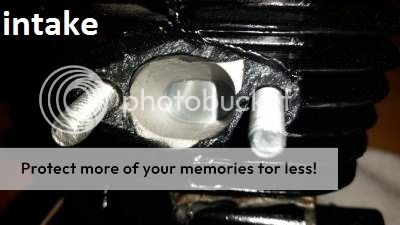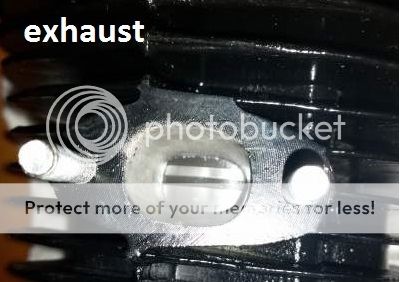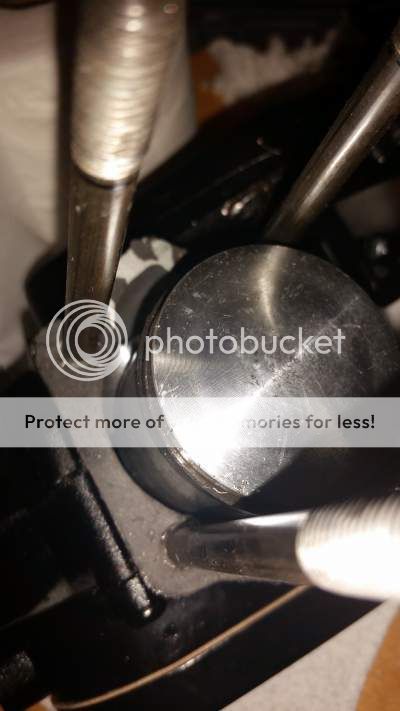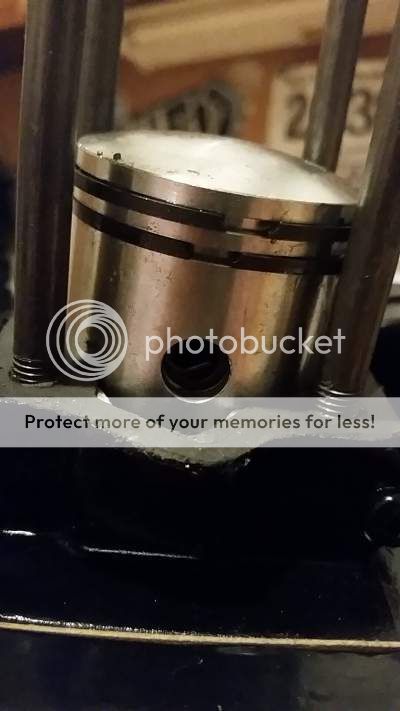Got my kit at the door today! ($130 off eBay)
Decided to take a look before installing.
Here are my intake and exhaust ports, they look okay to me. What do y'all think?


I read somewhere on this forum that I should sand down this part of my engine (not sure what it's called, a bowl?)

I chipped off some of this very brittle gasket, I'm afraid some might have gone inside :/. I also though tmy piston rings were broken when I realized they're supposed to look like that haha
 [URL=http://s1093.photobucket.com/user/mysterysandwich/media/OTB-piston_zpspwfaj1yg.jpg.html]
[URL=http://s1093.photobucket.com/user/mysterysandwich/media/OTB-piston_zpspwfaj1yg.jpg.html]
I want to give the engine a good rinse/clean and the author of this thread gave it a couple baths with WD-40 and one last one with 4-stroke oil. http://motorbicycling.com/showthread.php?t=45884
Would I just spray a whole bunch of WD-40 in the crevices between the piston and the body then shake it up?
Does anybody know if it'll be okay for me to use this "Mobil-1 10W-30, Synthetic, High mileage" as the last rinse?
Any help/input/advice is greatly appreciated!
Decided to take a look before installing.
Here are my intake and exhaust ports, they look okay to me. What do y'all think?


I read somewhere on this forum that I should sand down this part of my engine (not sure what it's called, a bowl?)

I chipped off some of this very brittle gasket, I'm afraid some might have gone inside :/. I also though tmy piston rings were broken when I realized they're supposed to look like that haha
 [URL=http://s1093.photobucket.com/user/mysterysandwich/media/OTB-piston_zpspwfaj1yg.jpg.html]
[URL=http://s1093.photobucket.com/user/mysterysandwich/media/OTB-piston_zpspwfaj1yg.jpg.html]
I want to give the engine a good rinse/clean and the author of this thread gave it a couple baths with WD-40 and one last one with 4-stroke oil. http://motorbicycling.com/showthread.php?t=45884
Would I just spray a whole bunch of WD-40 in the crevices between the piston and the body then shake it up?
Does anybody know if it'll be okay for me to use this "Mobil-1 10W-30, Synthetic, High mileage" as the last rinse?
Any help/input/advice is greatly appreciated!


